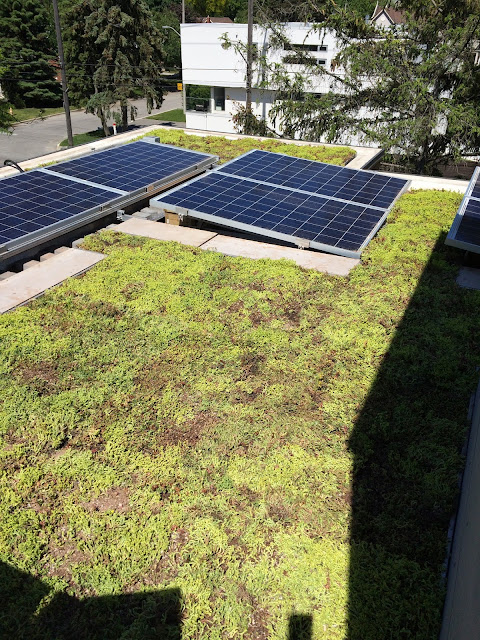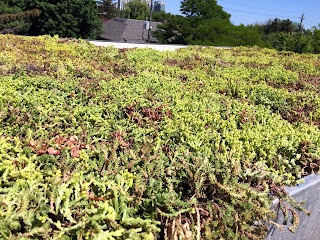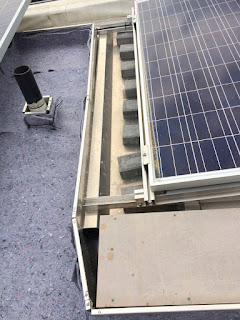What Did It All Cost?
The sixty four million dollar question.
The initial suggested price was "about $20,000". This number was based on a site inspection and discussion by a green roof landscaping professional whose judgement we trusted. (And still do)
When we signified "interest' and asked for a detailed budget another number came back. I offered to provide a unit of "grunt labour". The quote was then around $40,000, using "around" very loosely. This price was based on another site inspection and discussion with the green roof installer (contractor)
That $40K budget was declined as being unworkable, and we proceeded to activate Plan B - Do It Yourself".
All things considered, our roof costed about $200 per square metre for all the things I had to spend money on. Materials, delivery, hoisting, permits and approvals, 3rd party technical support.
The City Eco-Roof Grant covered $75 per sq m - abut 1/3 of the materials.
To which you add "labour". Realistically, commercial labour could double your cost for a simple installation, or treble it for a fussy installation. I think of ours as a fussy installation.
As the say YMMV! Your Mileage May Vary.
Is It Worth It?
We are still getting used to the roof. Analysis over the next couple of summers will eventually show if there is any financial benefit.
In the mean time..
- The second story of our home is noticeably cooler, especially on the real stinky sticky hot nights.
- The storm runoff from our roof is substantially delayed and reduced in volume compared to our immediate neighbours and their flat roofs. Small storms just don't runoff - they get absorbed.
- Now that the roof has grown "up" an inch or two and can be easily seen from the street, it is a local talking point.
- The shrubs in tubs are quite eye catching as they leer over the parapet. They do need regular watering with the same frequency as the rest of the ground level garden.
- I have watered the roof garden only once in a dry spell in July.
- We have been videoed and interviewed three times (in three months) for television programs. One interview was for a Chinese language TV channel "with English interviews" that were dubbed over into Chinese language. Video clips on my F/B page.
 |
| July, 2015 |















































